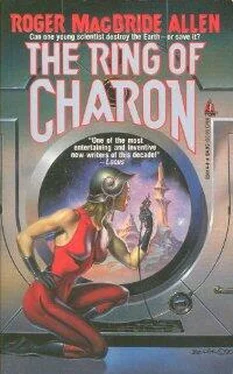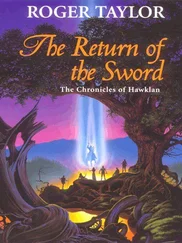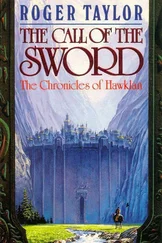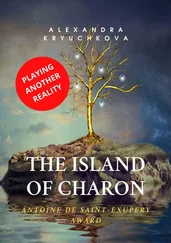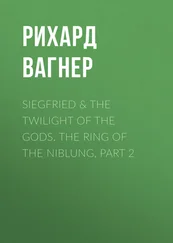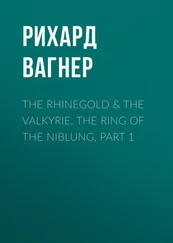Roger Allen - The Ring of Charon
Здесь есть возможность читать онлайн «Roger Allen - The Ring of Charon» весь текст электронной книги совершенно бесплатно (целиком полную версию без сокращений). В некоторых случаях можно слушать аудио, скачать через торрент в формате fb2 и присутствует краткое содержание. Год выпуска: 1990, ISBN: 1990, Издательство: Tor Books, Жанр: Фантастика и фэнтези, на английском языке. Описание произведения, (предисловие) а так же отзывы посетителей доступны на портале библиотеки ЛибКат.
- Название:The Ring of Charon
- Автор:
- Издательство:Tor Books
- Жанр:
- Год:1990
- ISBN:0-812-53014-4
- Рейтинг книги:5 / 5. Голосов: 1
-
Избранное:Добавить в избранное
- Отзывы:
-
Ваша оценка:
- 100
- 1
- 2
- 3
- 4
- 5
The Ring of Charon: краткое содержание, описание и аннотация
Предлагаем к чтению аннотацию, описание, краткое содержание или предисловие (зависит от того, что написал сам автор книги «The Ring of Charon»). Если вы не нашли необходимую информацию о книге — напишите в комментариях, мы постараемся отыскать её.
The Ring of Charon — читать онлайн бесплатно полную книгу (весь текст) целиком
Ниже представлен текст книги, разбитый по страницам. Система сохранения места последней прочитанной страницы, позволяет с удобством читать онлайн бесплатно книгу «The Ring of Charon», без необходимости каждый раз заново искать на чём Вы остановились. Поставьте закладку, и сможете в любой момент перейти на страницу, на которой закончили чтение.
Интервал:
Закладка:
It is likely the present-day Charonians started out as seedships for a colonization venture, bearing the original biological Charonians to new homes in the sky, but either by ill chance or deliberate decision on the part of the robotic guardians of the germ plasm, things changed.
The machine-intelligent components of the system redesigned the system, repeatedly modifying both themselves and the genes of the living components. The result: the Charonians have become a form of von Neumann machine, capable of endlessly replicating themselves.
Humans have spent lifetimes studying the idea of von Neumann machines, but the concept, however appealing, has always been out of reach because the cost and engineering challenges were too great. No one ever considered a simple, elegant solution to the problem: that life is a von Neumann machine. We humans can endlessly duplicate ourselves. If our DNA were modified so that we instinctively built a certain type of spacecraft, and that spacecraft automatically carried our germ plasm to another world, then that would be a von Neumann. It is, after all, not the machine itself that must be duplicated and spread across the galaxy for the idea to work, but the plans for the machine.
Several types of life-form and robot compose the Charonian multispecies. The living and robotic components rely on each other in the processes of reproduction and replication. Neither the biotic nor the mechanical Charonians could survive without the other.
The Charonians have proved that faster-than-light travel is possible, but only between points linked by black hole transit pairs and the “wormhole” connecting the transit pair. Natural black holes do not work in wormhole systems—a spacefarer must build his own. Therefore, before faster-than-light travel between two stars is possible, sub-lightspeed vehicles must move between the two stars, building black holes on arrival at the star to be visited. Unfortunately, a device the size of the Ring of Charon is required to form a black hole.
The Stages of the Charonian Life-Robotic Cycle
Robot spacecraft called seedships are grown and manufactured by Dyson Spheres. Each seedship leaves its home Sphere, carrying the location of its home Sphere in its heritage memory.
The seedships travel at sublightspeed out from the Dyson Spheres and move between the stars, searching for life-bearing planets. When appropriate planets are found, the seedships land. They gather needed chemicals and compounds, and clone the first living stage in the cycle, which can be thought of as larvae. With the help of the larvae, the seedship constructs simple spacecraft.
The larvae are large creatures at birth (or, more accurately at decanting), the smallest the size of an elephant. They grow rapidly, and later develop into various specialized types. By virtue of their great size and rapid growth, they can quickly wreck the biosphere of a life-bearing world. Their behavior is in large part hardwired, in some part controlled by the seedship, but in small part volitional. The first few generations of the creatures simply breed as normal male-female pairs, bearing about six to eight offspring per mating. As they mature, most of these larvae are set to work building additional spacecraft, under the guidance of the seedships. Generally, the seedships are cannibalized for parts long before the larvae are ready to leave the planet.
Typically, the invasion of the larvae results in major depopulations and mass extinctions, combined with serious climatic and ecological damage.
Powered by gravities, the spacecraft built by the larvae lift into space—with luck, before the planet’s ecosphere is utterly ruined. With one larva aboard each vehicle, the spacecraft can be compared to hermit crab shells—temporary homes to be used as long as they fit. If the larva dies or grows too large for the craft, the vehicle will be cannibalized for parts. Nine-tenths of the larvae die upon arrival in space. Their corpses serve as sustenance for the survivors.
Each surviving larva battles it out with its rivals to amass as many of the dead bodies and abandoned spacecraft as possible. Eventually, thirty or forty thousand massive creatures, in the pupa phase, are left. Each consists of the components of several derelict spacecraft and one individual pupa that has fed on the bodies of its littermates. Ship and creature merge with each other and become indistinguishable. Each is the size of a small asteroid, being several kilometers across with proportionate mass.
One or two pupae land on the nearest non-life-bearing world and burrow into it. Should a pupa survive this effort, the machine parts of the creature will build and breed a Caller Ring. A Caller Ring is buried deep in the Earth’s Moon.
However, most pupae enter a chrysalis phase, becoming dormant, their outer skins hardening into the consistency of rock. Thus, not only are they the size of asteroids, they precisely resemble them. These creatures, which become Worldeaters, go into hiding. In Earth’s Solar System, they hid in the Asteroid Belt and the Oort Cloud. At this stage, all the Charonian creatures, both living and robotic, are dormant, waiting for a signal.
A signal to the Caller Ring stimulates a new phase of great activity. The Caller Ring can be activated in one of two ways: by signal from the home Dyson Sphere, indicating that the Sphere has a sufficient surplus of energy to assist in the construction of a daughter sphere; or, by outside interference: pulsed gravity waves generated by some other cause—for example, gravity experiments performed by an intelligent race.
When the Caller Ring detects a burst of controlled gravitic energy, it performs its basic function—opening a gravitic contact, a Virtual Black Hole transit pair, linking it to its home Dyson Sphere. The Caller Ring then sends a pulsed-gravity-wave signal to the Worldeater chrysalides sleeping in the star system.
Linked to the home Dyson Sphere, the Caller Ring attempts to get the life-bearing world out of harm’s way by shifting it to the artificial star system surrounding the home Sphere. If the Sphere initiated the call, or if it has at least some surplus of energy available, it permits the transit to take place. Earth’s sudden arrival is not the first unplanned grab of a world—the Dyson Sphere knows how to handle such things.
As soon as possible, the Sphere shifts an Anchor black hole through the temporary Virtual Black Hole, providing a more powerful and stable link to the home Sphere.
The Multisystem of habitable worlds orbiting the home Dyson Sphere can be thought of as a field lying fallow. The Charonians accumulate life-supporting planets that can be sent to where they are needed.
If a seedship has visited several unsuitable solar systems and is near the end of its operational life when it arrives at yet another lifeless system, it can call the home Dyson Sphere and give up the last of its energy to have one of the stockpiled worlds shifted to an otherwise suitable solar system. Replaced by a new seedship shifted in with the new world, the life cycle can then proceed.
The Dyson Sphere begins to beam energy through the Caller Ring. The awakening chrysalides emerge from their long sleep as adult Worldeaters. Their robotic components link with the Caller Ring and begin to absorb power. The Worldeaters head toward the major worlds of the solar system and start ripping them to shreds, forming them into the materials needed to form a new Dyson Sphere. Their work can take hundreds or thousands of years, but at its end, a new Sphere is ready, able to breed and build its own seedships and begin construction of its own empire of captive worlds.
Интервал:
Закладка:
Похожие книги на «The Ring of Charon»
Представляем Вашему вниманию похожие книги на «The Ring of Charon» списком для выбора. Мы отобрали схожую по названию и смыслу литературу в надежде предоставить читателям больше вариантов отыскать новые, интересные, ещё непрочитанные произведения.
Обсуждение, отзывы о книге «The Ring of Charon» и просто собственные мнения читателей. Оставьте ваши комментарии, напишите, что Вы думаете о произведении, его смысле или главных героях. Укажите что конкретно понравилось, а что нет, и почему Вы так считаете.
